New Horizons Trajectory Animation
This animation illustrates the trajectory (path through the Solar System) of the New Horizons space mission to Pluto and beyond.
Note: If you cannot see the movie you may need to download the latest QuickTime player.
Movie courtesy of NASA/Johns Hopkins University Applied Physics Laboratory/Southwest Research Institute. |
The animation begins with the launch of New Horizons from Earth on January 19, 2006. New Horizons zoomed away from our planet at the highest
speed of any spacecraft leaving Earth so far... it was traveling at 16.21 km/s
(36,300 mph) when its engine shut down!
New Horizons crossed the orbit of Mars on April 7, 2006. The spacecraft safely passed through the asteroid
belt between the orbits of Mars and Jupiter during a five month period lasting from May through October 2006.
Next, the animation shows the spacecraft during its Jupiter flyby in February 2007. A gravity assist from the gas giant planet increases New Horizon's speed, cutting years off its journey to Pluto.
The spacecraft is expected to fly past Pluto and its largest moon Charon in July 2015. After that, scientists hope to steer New Horizons on to a close encounter with one or more Kuiper Belt Objects.
More New Horizons mission movies:
 Animation of the New Horizons mission (6.4 MB)
Animation of the New Horizons mission (6.4 MB)
 Video of the launch of the New Horizons mission (5.5 MB)
Video of the launch of the New Horizons mission (5.5 MB)
You might also be interested in:
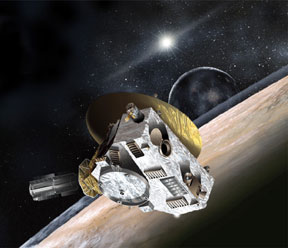
A NASA spacecraft is on its way to Pluto. The spacecraft, named New Horizons, will be the first mission to visit that frozen world on the outer fringes of our Solar System. New Horizons was launched from
...more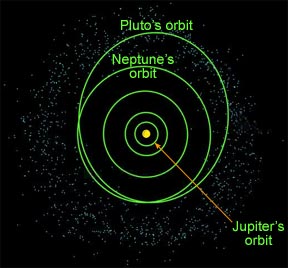
Thousands of frozen worlds hover at the edge of our Solar System. These frigid balls of ice and rock, similar in location and size to the planet Pluto, orbit the Sun in a distant region called the Kuiper
...more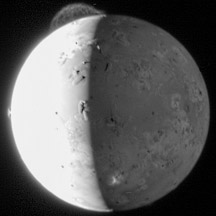
The New Horizons spacecraft flew past Jupiter on February 28, 2007. New Horizons, which was launched in January 2006, is just over a year into its 9-year trek to Pluto. The spacecraft got a gravity assist
...more
Io is the innermost of Jupiter's four large Galilean moons. Io is the most volcanically active object in our Solar System. It is no surprise, then, to find some of Io's 400 active volcanoes near the moon's
...more
Here you will find links to all sorts of pictures, animations, videos, sounds, and interactive multimedia that are on Windows to the Universe Explore collections of images in the Image Galleries. Watch
...more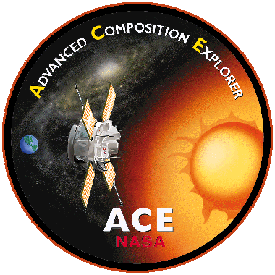
The ACE (Advanced Compostion Explorer) was launched aboard a Delta II rocket in August 1997. This unique NASA mission will run a minimum of 2 years (with an expected lifetime of over 5 years). This mission
...more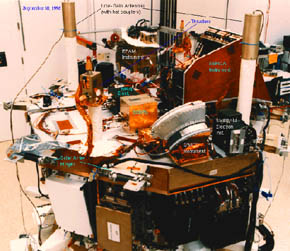
The ACE spacecraft consists of a two-deck irregular octagon, about 1.6 meters (65 inches) across and about 1 meter (40 inches) high. Eight of the scientific instruments which measure a variety of particle
...more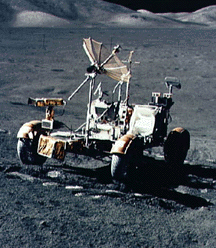
Astronauts Eugene Cernan, who had flown on Apollo 10, and Harold Schmitt, a professional geologist, were the last humans to walk on the Moon, in the final mission of the Apollo space program. Together
...more
![]() Animation of the New Horizons mission (6.4 MB)
Animation of the New Horizons mission (6.4 MB)![]() Video of the launch of the New Horizons mission (5.5 MB)
Video of the launch of the New Horizons mission (5.5 MB)












